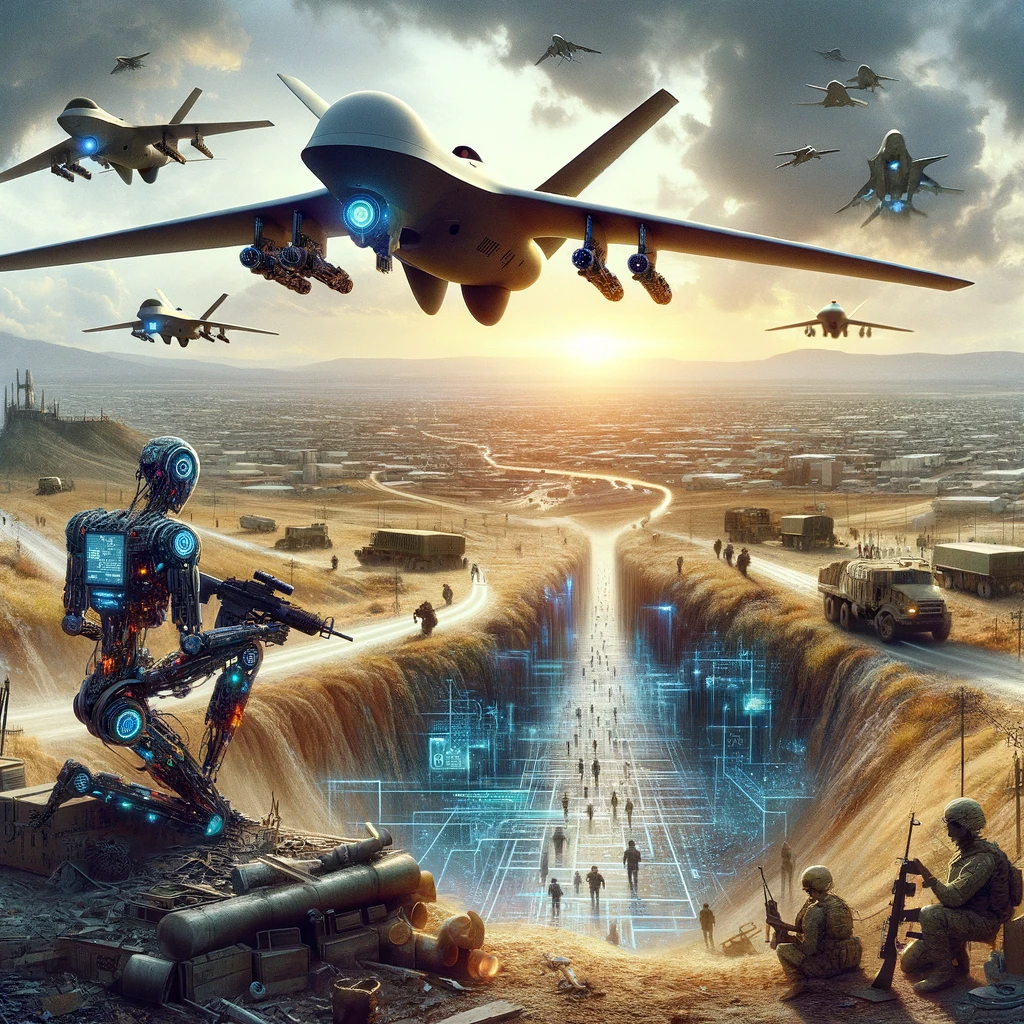Israel’s military has deployed AI-enabled technology in combat operations for the first time during the recent conflict in Gaza, sparking concerns about the increasing use of autonomous weapons in contemporary warfare.
Spokesperson Daniel Hagari indicated the broad scope of the technology’s application, stating that Israeli forces were simultaneously operating “above and underground.” A senior defense official disclosed to AFP that the technology is being employed to neutralize enemy drones and map Hamas’s extensive tunnel network in Gaza.
Amidst disruptions caused by the conflict, new defense technologies, such as AI-powered gunsights and robotic drones, offer a glimmer of hope for Israel’s tech industry. Despite contributing 18 percent to the GDP in 2022, the sector has faced challenges, with approximately eight percent of its workforce being mobilized for military duty.
Avi Hasson, CEO of Startup Nation Central, highlighted the dual nature of the conflict as both presenting threats and opportunities for testing emerging technologies.
However, the mounting civilian casualties underscore the imperative for enhanced oversight over deploying novel defense technologies. Mary Wareham, an arms expert at Human Rights Watch, emphasized the urgent need for greater scrutiny, attributing some of the current death toll to the utilization of new technologies in conflict zones.
In December, over 150 countries supported a UN resolution acknowledging the serious challenges and concerns posed by advancements in military technology, specifically citing artificial intelligence and autonomy in weapons systems. This widespread support underscores the global apprehension surrounding the ethical implications of modern warfare and the urgent need for international cooperation to address these issues.
Israel’s mapping Hamas tunnels with AI-driven drones
Prime Minister Benjamin Netanyahu’s commitment to “destroy” Hamas hinges significantly on dismantling the intricate network of underground tunnels used by the group’s fighters for shelter and to hold hostages. Referred to as the “Gaza Metro” by the Israeli army, this network comprises an extensive labyrinth of tunnels, with estimates suggesting there are approximately 1,300 tunnels spanning over 500 kilometers (310 miles), as reported by a recent study from the US military academy West Point.
The Israeli military has turned to innovative technologies to effectively map these tunnels, notably drones with artificial intelligence (AI). These AI-enabled drones are designed to learn to detect human presence and can navigate underground environments. One such drone, developed by Israeli startup Robotican, is encased in a robotic shell, allowing it to operate in the underground passages of Gaza.
According to a senior Israeli defense official, these drones are utilized in Gaza to penetrate tunnels and gather intelligence, leveraging their capabilities to transmit data despite communication challenges underground. Before the conflict, technological limitations hindered drone operations below ground due to difficulties transmitting images to the surface. However, advancements in AI have enabled these drones to overcome such obstacles, enhancing Israel’s ability to surveil and neutralize threats within the tunnel network.
While the conflict has prompted concerns about human rights implications, it has also underscored Israel’s position as a leading manufacturer of state-of-the-art defense systems. Reports from The Wall Street Journal indicate that the United States, Israel’s primary international ally and a significant provider of military aid, is adopting Israeli-developed technology to train its soldiers.
Specifically, US soldiers are being trained to utilize Smart Shooter’s optic sights to counter the threat posed by drones, further cementing the collaboration and exchange of expertise in defense technology between the two nations.
Israel’s deploying Angry Birds against drone threats
The conflict between Hamas and Israel on October 7th marked a significant escalation, resulting in substantial loss of life and hostages. According to an AFP tally based on official figures, approximately 1,160 people in Israel, primarily civilians, lost their lives in the attack, with Hamas reportedly holding around 250 hostages, including some 132 still believed to be in Gaza, with at least 29 feared dead.
Israel’s military response, however, has led to a much higher death toll in Gaza, with nearly 28,000 casualties reported by the Hamas-ruled territory’s health ministry, predominantly women and children.
This modern conflict has been characterized by the widespread use of inexpensive unmanned aerial vehicles (UAVs), commonly called drones, which have enabled aerial attacks to be carried out more easily and cost-effectively.
Hamas utilized drones to drop explosives during the October 7th attack, prompting Israel to deploy innovative technologies to counter these threats. Notably, the Israeli military has employed AI-enabled optic sights, developed by Israeli startup Smart Shooter, which can be attached to various weapons, including rifles and machine guns.
According to a senior defense official, this technology enhances soldiers’ ability to intercept hostile drones, effectively transforming every soldier into a skilled marksman, irrespective of visual impairments.
Another method utilized by Israel to neutralize enemy drones involves deploying a “friendly” drone equipped with a net capable of trapping hostile UAVs and rendering them ineffective. This tactic has been dubbed “Angry Birds” by military personnel, reflecting the drone-versus-drone nature of the engagement.
Land a High-Paying Web3 Job in 90 Days: The Ultimate Roadmap
 Israel AI Advancement
Israel AI Advancement